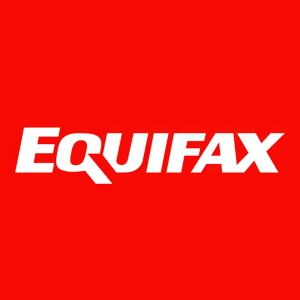Equifax Introduces Quarterly Market Pulse Index to Provide Insights Into the Financial State of U.S. Consumers
Rhea-AI Summary
Equifax (NYSE: EFX) launched the inaugural Market Pulse Index, a 1–100 benchmark that aggregates credit, debt, income, capacity and assets to track U.S. consumer financial health.
For H1 2025 the index was 61.4, slightly below the four‑year average of 61.85, and down 1.1% versus June 2021. The report highlights widening generational gaps: Gen Z’s index fell >5% from June 2021–June 2025, while Gen X and Baby Boomers showed smaller declines or steady readings.
Equifax notes student loan resumption materially pressured Gen Z (Gen Z borrowers: -4.8% 2021–2025; -6.6% during 2022–2023). Consumer credit demand rose: personal loan originations +17.6% (May 2024–May 2025) and bankcard balances reached $1.07T in July 2025 (+4.3% YoY).
Positive
- Launch of inaugural Market Pulse Index measuring five financial dimensions
- H1 2025 Market Pulse Index at 61.4 for baseline benchmarking
- Personal loan originations +17.6% May 2024–May 2025
- Bankcard balances $1.07 trillion in July 2025 (+4.3% YoY)
Negative
- Market Pulse Index down 1.1% vs June 2021
- Generation Z index fell more than 5% June 2021–June 2025
- Gen Z student loan holders index -4.8% 2021–2025
- Gen Z borrowers experienced -6.6% between start 2022 and end 2023
News Market Reaction 1 Alert
On the day this news was published, EFX gained 1.27%, reflecting a mild positive market reaction.
Data tracked by StockTitan Argus on the day of publication.
The Market Pulse Index for the First Half of 2025 Highlights Generational Divides in Financial Health as Consumers Look Ahead to the Holiday Season
The Market Pulse Index distills and measures consumer financial data points such as:
- Credit: The ability to obtain and manage credit based on historic credit usage and performance
- Debt: The amount of debt held in relation to the ability to pay that debt
- Income: Personal income from employment and other sources such as interest, investments, gifts, etc.
- Capacity: The ability to continue meeting spending and debt obligation needs during periods of financial stress
- Assets: The existence of savings and other wealth that can be used to meet discretionary and non-discretionary spending needs or debt obligations, if needed
For the first half of 2025, the Market Pulse Index was 61.4, slightly below the four-year average of 61.85 (June 2021 - June 2025) driven in part by pressure on generation Z from student loans. Comparing June 2025 to June 2021, the index declined by
A new analysis using the Market Pulse Index reveals a widening financial gap between generations, with younger consumers facing the most significant pressure. Generation Z is driving this trend, with their Market Pulse Index falling by more than
Student Loans Significantly Impacting Gen Z
The resumption of federal student loan payments has created a distinct and growing gap in financial health between borrowers and the general population, according to a new analysis using the Market Pulse Index.
In 2021 and 2022, the rate of change in financial health of those with and without student loans was nearly identical. However, the Market Pulse Index began to diverge in 2023 as the payment pause ended. Younger generations have been hit hardest, with the Market Pulse Index for Gen Z student loan holders falling
"By aggregating critical data points like credit, debt, income, capacity and assets, we can illustrate how various economic forces are impacting
Holiday Shoppers Get Creative Amid Financial Strain
As the holiday season approaches, consumers appear to be treading lightly with spending, regardless of their income level. Recent data is signaling rising demand for credit, with personal loan originations up
"Consumers are approaching the holiday shopping season with more caution and creativity than usual as they contend with higher prices and debt burdens," added Aliff. "Rising costs will likely weigh more heavily on middle-income households and younger generations, and many are turning to new strategies to stretch their budgets. While credit and flexible payment options are helping young families keep traditions alive, they also underscore the potential financial strain that may shape consumer behavior this season."
The Equifax Market Pulse Index was built using AI/ML methods and proprietary Equifax wealth and asset and traditional credit data to provide a comprehensive view of consumer financial health by capturing the combined effects of multiple economic forces rather than focusing on a single variable. It distills the credit, debt, income, capacity and assets of
ABOUT EQUIFAX INC.
At Equifax (NYSE: EFX), we believe knowledge drives progress. As a global data, analytics, and technology company, we play an essential role in the global economy by helping financial institutions, companies, employers, and government agencies make critical decisions with greater confidence. Our unique blend of differentiated data, analytics, and cloud technology drives insights to power decisions to move people forward. Headquartered in
FOR MORE INFORMATION:
Tiffany Smith for Equifax
mediainquiries@equifax.com
![]() View original content to download multimedia:https://www.prnewswire.com/news-releases/equifax-introduces-quarterly-market-pulse-index-to-provide-insights-into-the-financial-state-of-us-consumers-302582440.html
View original content to download multimedia:https://www.prnewswire.com/news-releases/equifax-introduces-quarterly-market-pulse-index-to-provide-insights-into-the-financial-state-of-us-consumers-302582440.html
SOURCE Equifax Inc.









